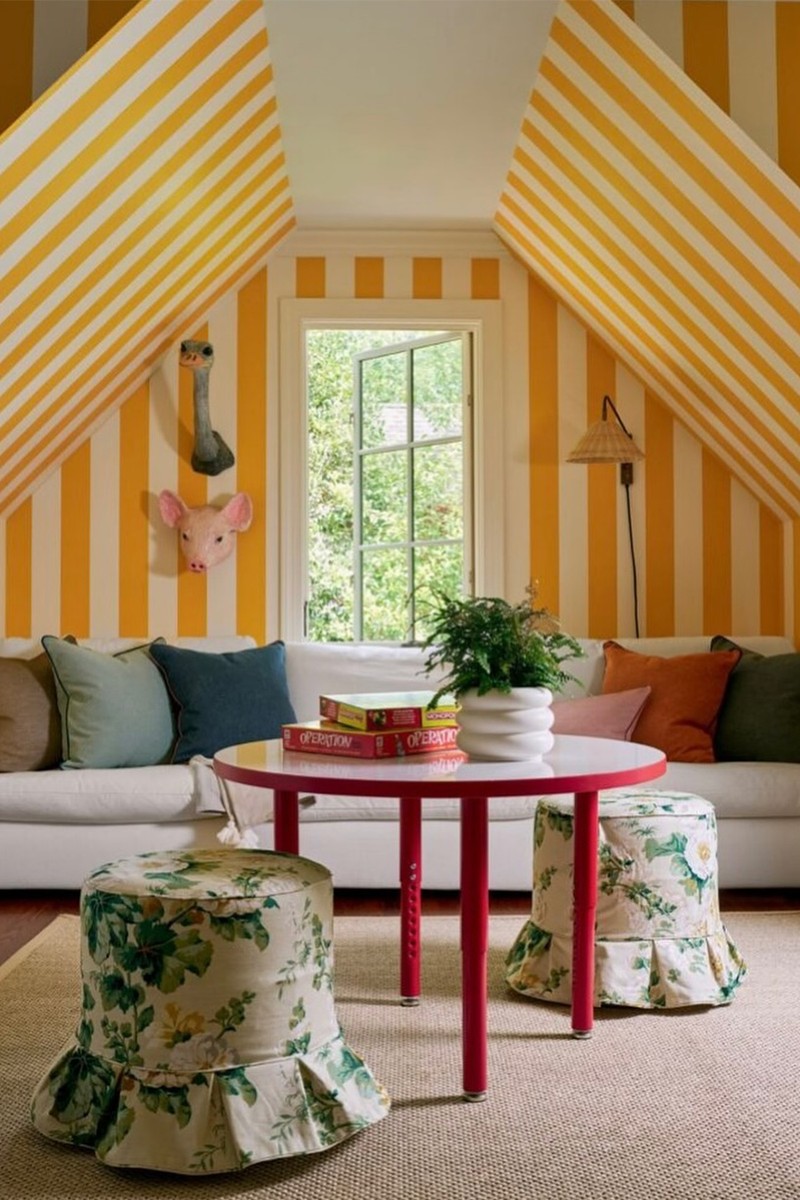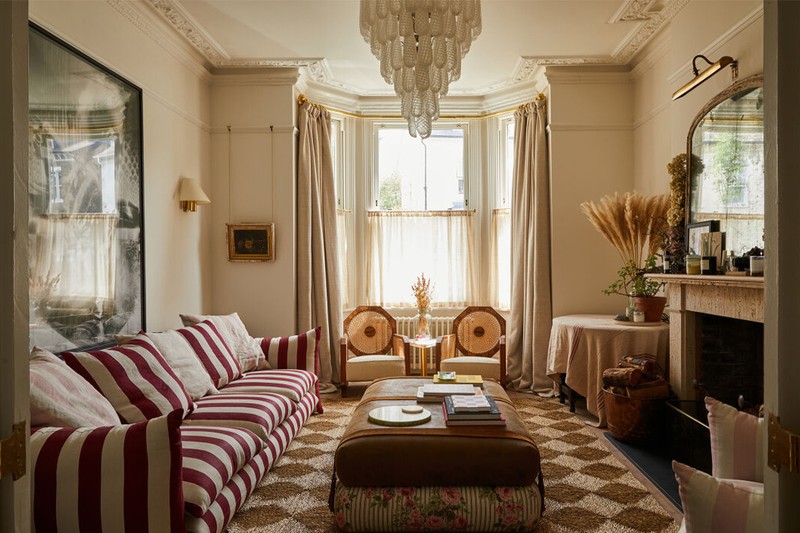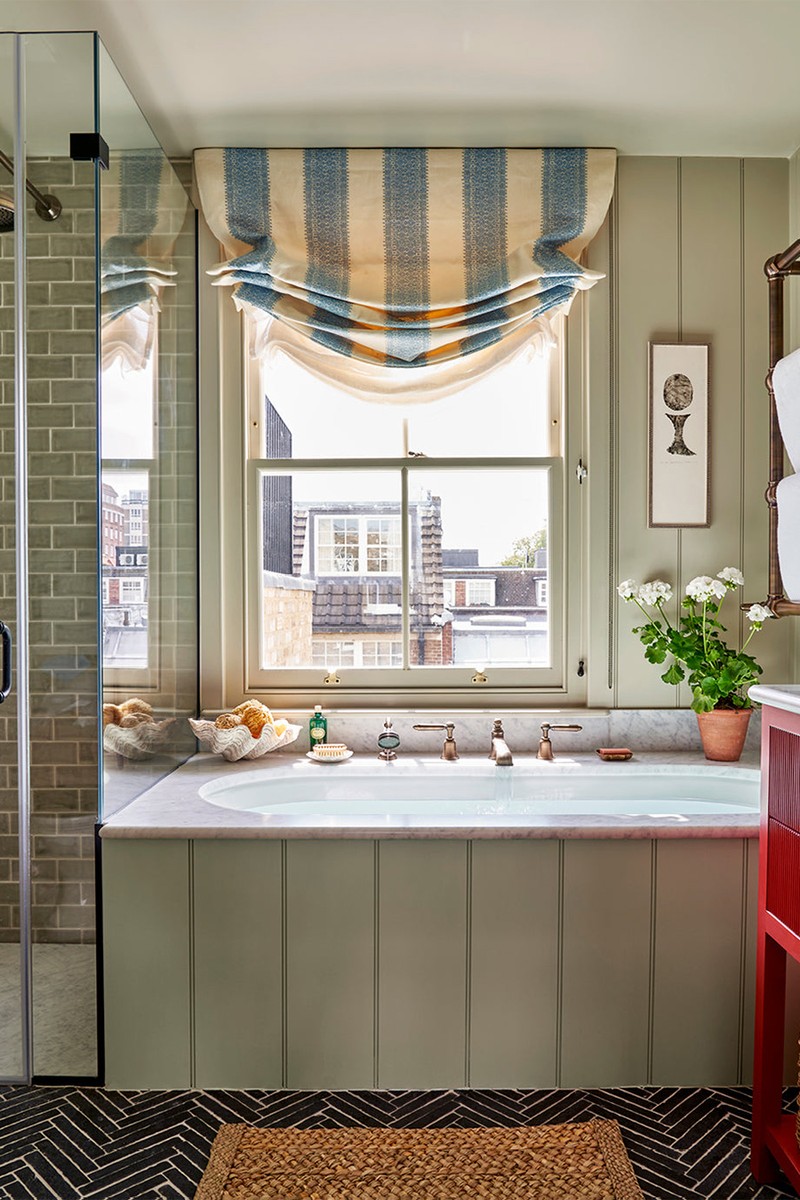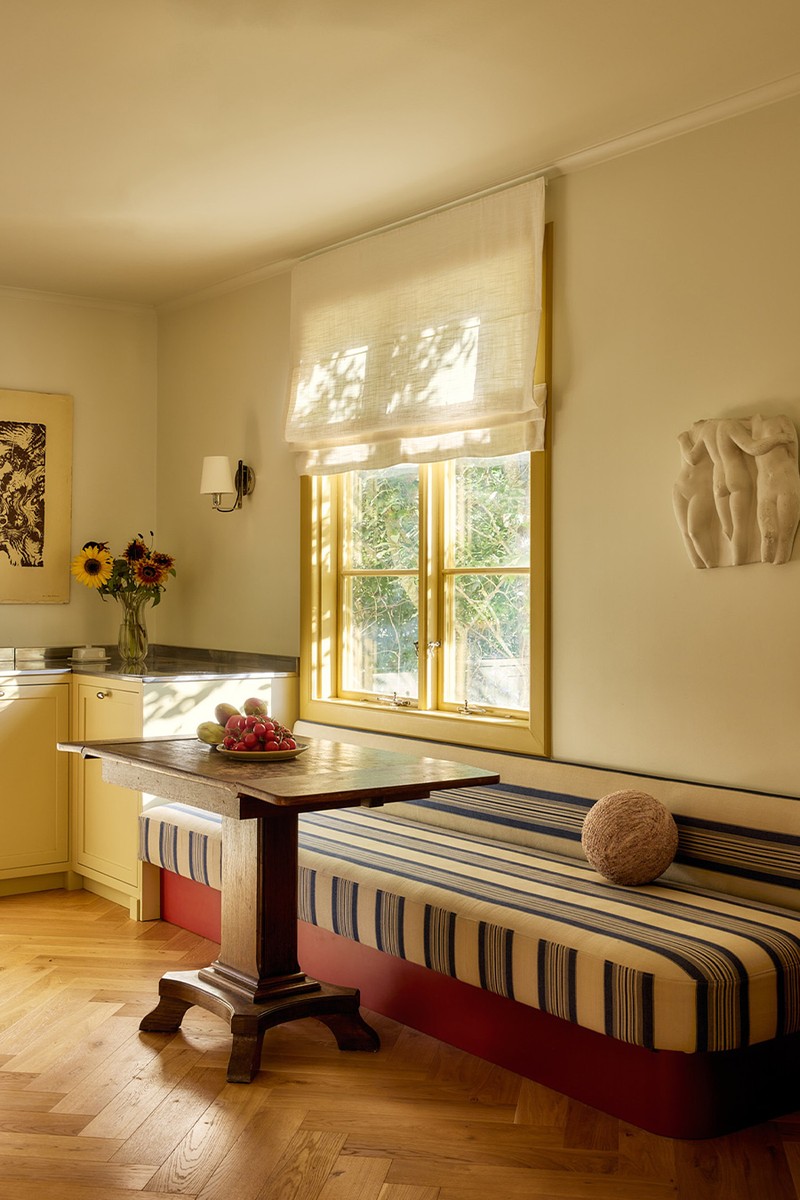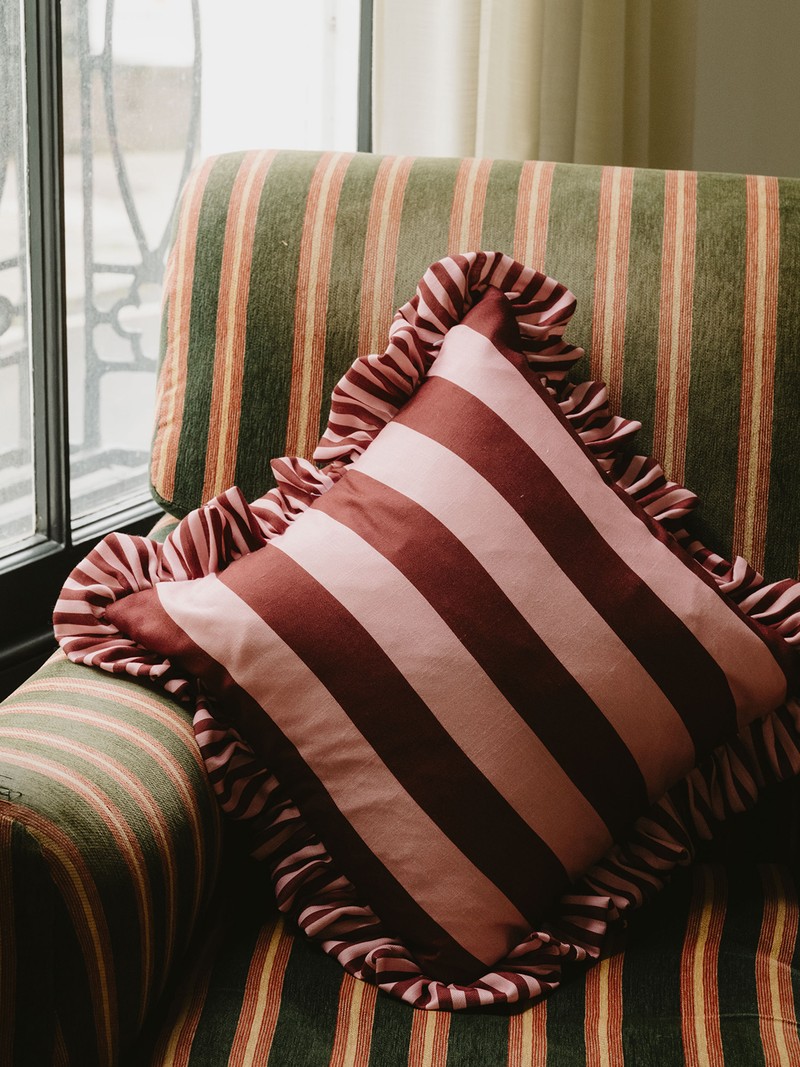
How To Decorate With Stripes
Stripes are a classic – but how do you keep them feeling fresh?
We like to play with the scale of the stripe. Wide stripes tend to feel more contemporary and bolder than a slimmer stripe like a ticking. We use a lot of natural materials such as linen in our projects, and striped linen has a relaxed feel to it, which helps. It isn’t as graphic and rigid as some other fabrics.
When it comes to walls, do you prefer painted stripes, wallpaper or panelling?
I prefer panelling. I love the character it adds – it can transform even the most uninspiring spaces. We use different types of panelling depending on the period of the property and the feel we are trying to convey. Bead and butt style panelling (as pictured in our bath mage with the blue striped blind) is more traditional. Where we want something simpler, we might use V-groove panelling instead. This has a continuous V-groove running between the boards. We tend to panel rooms vertically but horizontal ship-lap panelling can be very effective as a bath panel. It’s a softer option than tiling an entire wall. It can be more cost-effective too, particularly in a cloakroom or a guest bathroom.
Stripes can vary in scale – how do you decide on wide or narrow?
It often depends on the size of the space. Fine stripes like ticking work well in smaller spaces like a utility room, pantry, nursery or small bedroom. To make a bigger impact in a smaller space, the same stripe can be used all over, including the ceiling and walls. Ticking would be lost in a larger area such as a hallway, but wider stripes work particularly well in entrances to give it an identity and a bit of wow factor.
What are your tips for mixing stripes with other patterns?
Always vary the scale to avoid the fabrics fighting. A small-scale pattern would work better alongside a wide stripe rather than a small-scale stripe, such as a pinstripe or a ticking. Add in plain fabrics to break up the pattern. It’s also important balance the pattern with a variety of textures. Use a wide range of materials to create a more layered and considered feel. Mix linen fabrics, with wool, and velvet, for example. Have a colour palette in mind, so you are sticking to three or four colours that work happily together. We often have one main patterned fabric, rug or artwork that contains all the colours, that we then pull from. Try to bring in maybe one colour or shade that is more unexpected too. This could be in something as small as a cushion. It ensures the scheme feels unique, interesting, and fresh. Use vintage or antique fabrics too. They make a space feel as though it’s come together over time and from many different sources, rather than from a one-stop shop.
How do you balance striped elements with plainer fabrics or finishes?
Usually, the larger furniture pieces in our projects are upholstered in a plain fabric, and smaller more playful elements, such as an armchair or ottoman will be upholstered in a stripe or another pattern. This ensures the space feels balanced. It also helps to echo the stripe colour in a plain fabric in the space to create some unity. This works particularly well if the materials are different, though they don’t need to be.
Finally, are there certain rooms or areas where stripes work particularly well or not?
We use stripes in all sorts of rooms. Stripes really enliven traditionally more utilitarian spaces, like a kitchen or a bathroom. They work well as standalone patterns in these particular rooms, or in a project where perhaps the clients don’t love more decorative patterns.
Visit LONIKACHANDE.COM
DISCLAIMER: We endeavour to always credit the correct original source of every image we use. If you think a credit may be incorrect, please contact us at info@sheerluxe.com.
